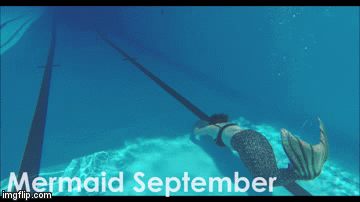
Originally Posted by
Merman Storm

There are tiny air bubbles in a typical silicone tail, trapped inside the material? I did not know that. Oddly, Smooth-on says one of the advantages of Dragon Skin is no vacuum degassing is needed!
Although a tail is virtually weightless under water, it still has its mass. The swimmer will be effected by this mass, and it can make swimming harder. If the tail does not drain well and fills with extra water, the mass increases and can make swimming even harder. If you are trying to reach the surface, this could feel like you are being weighted down, but that's not what's happening. The mass of the tail and its water load is making it harder to swim.
This is one reason why its best if your first tail is not a silicone tail.




 Reply With Quote
Reply With Quote













Bookmarks